BEST PLACE TO MAP YOUR THOUGHTS
Writer’s Studio Teaches Students to Stretch Outside Their Mediums
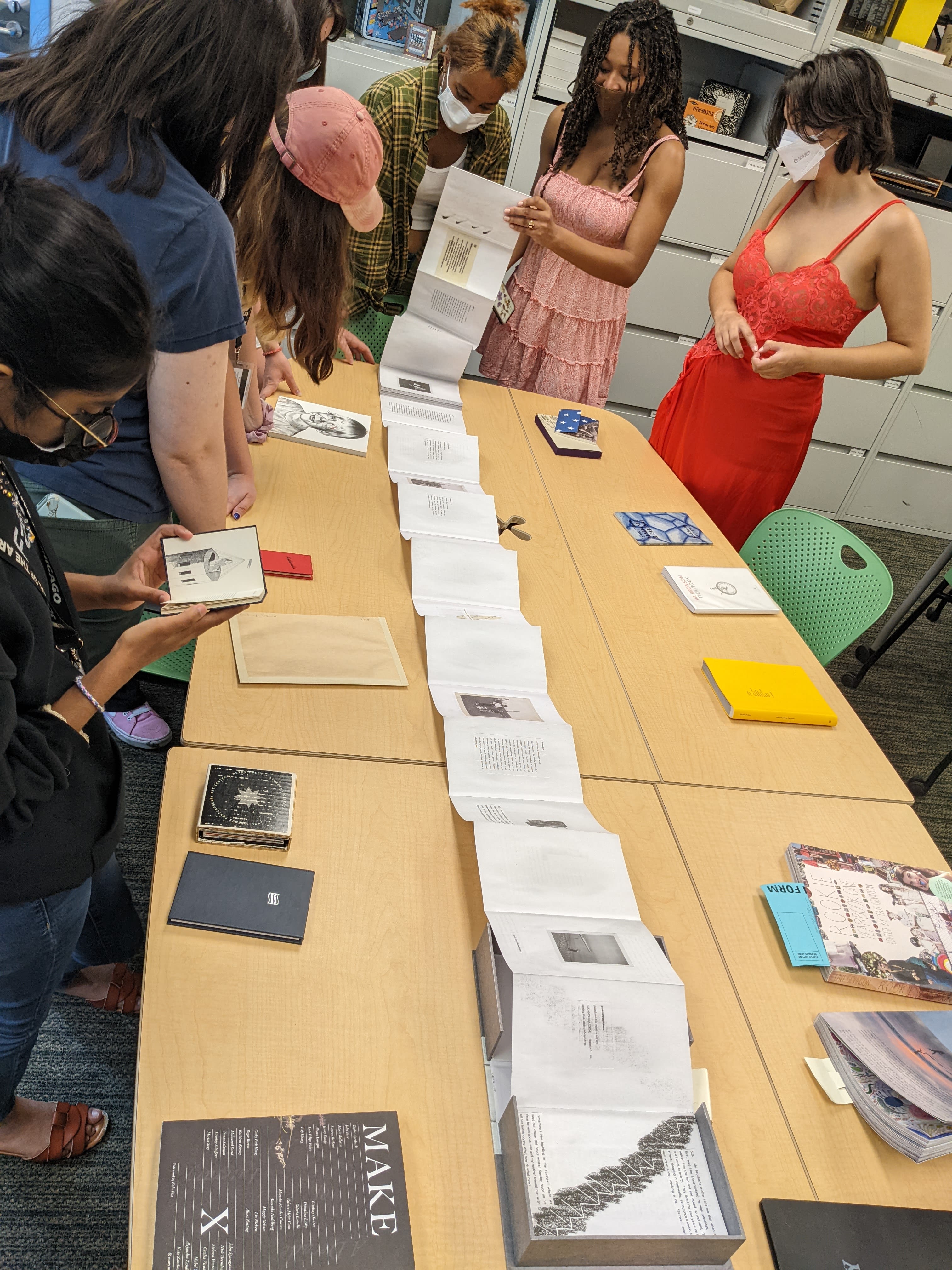
by Nadya Kelly (MA 2023)
For Associate Professor, Adj. Sherry Antonini (MFA 1998), trusting your early ideas is integral to the creative process.
The first thing Antonini’s students do in her Writer’s Studio class is create mind maps on large pieces of paper. Little by little, their paper becomes filled with text, and they use lines and circles to connect related ideas. After they’re done, Antonini and her students tape the maps on the classroom walls and note the ways their creative concepts have begun to take shape.
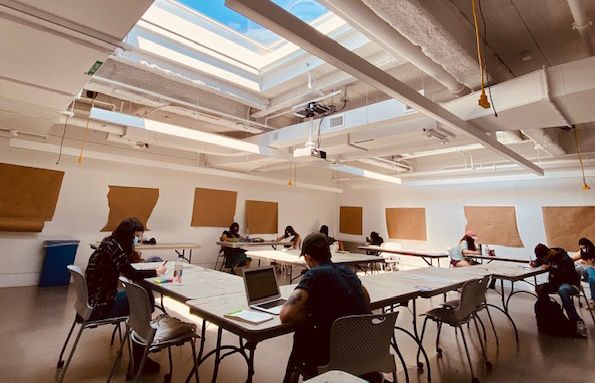
Students working in class
Students working in class
“You've got to give yourself some space to throw down all the possible ideas,” Antonini said. “So one of the first steps is to get students to trust their real, raw ideas by doing that.”
The point of Writer’s Studio, a one-week Early College Program Summer Institute course, is to allow high school juniors and seniors to not only experiment with their writing, but also experiment with different mediums, such as visual art, installation, and performance. Through exercises, workshops, and critiques, Antonini aims to help students develop their visions from an early idea to a polished work, and, through that process, to give their writing a creative edge.
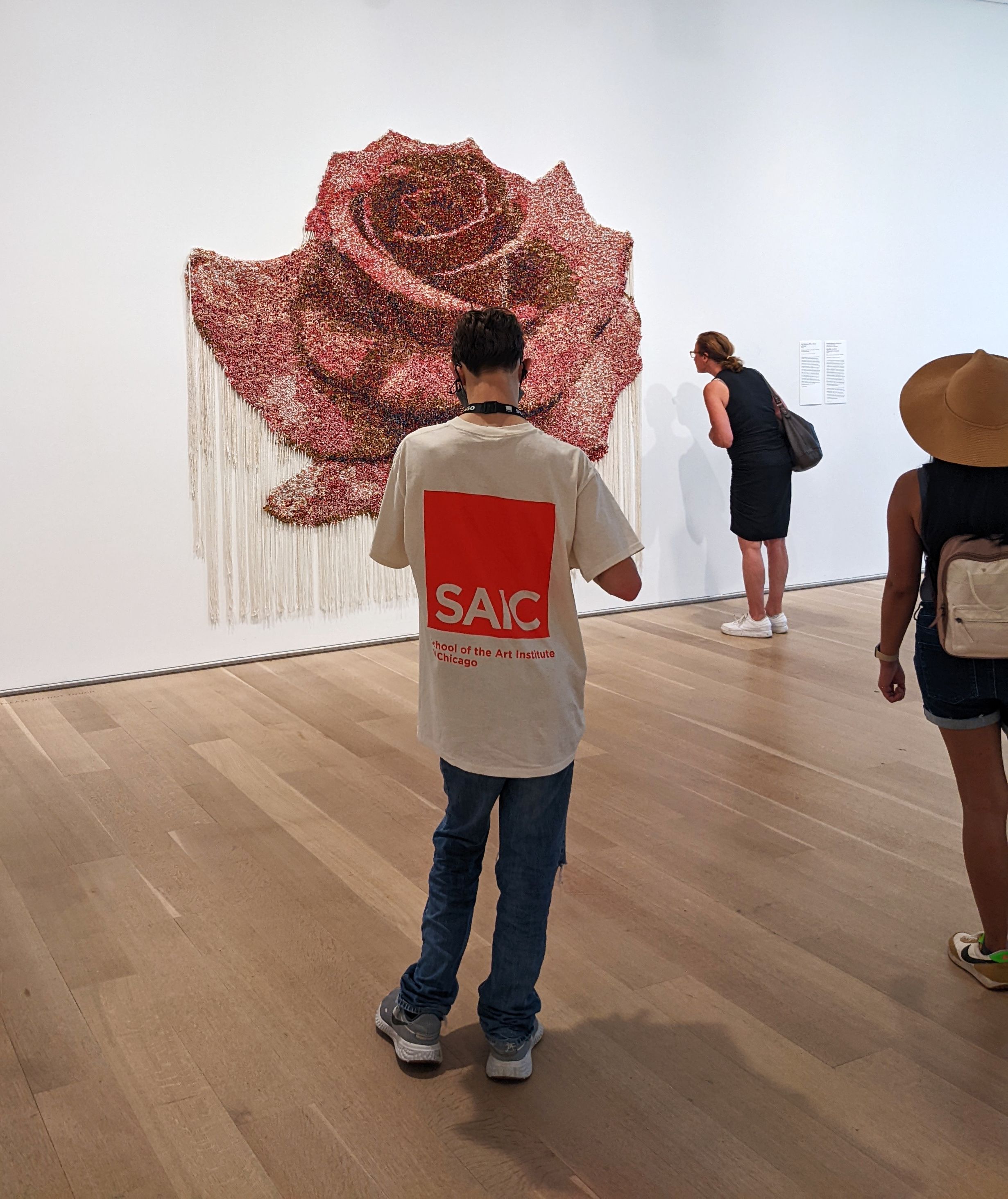
Students visiting the exhibit Igshaan Adams: Desire Lines at the Art Institute of Chicago.
Students visiting the exhibit Igshaan Adams: Desire Lines at the Art Institute of Chicago.
As an interdisciplinary artist whose practice combines writing with photography, performance, installation, and sound, Antonini enjoys encouraging her students to apply different mediums to their writing as a way to open their minds to new possibilities of working with text.
“Writing has always been central to the work that I do,” Antonini said. “Because my own practice involves reaching out in many directions, I get excited about encouraging students to think openly about the kind of dance that writing can do with other elements.” In past classes, one student created collage pieces made up of text, images of various flowers, and drawings of girls and comics. Another student created a three-dimensional installation of a nighttime world with a gnarled tree at its center to accompany a series of poems.
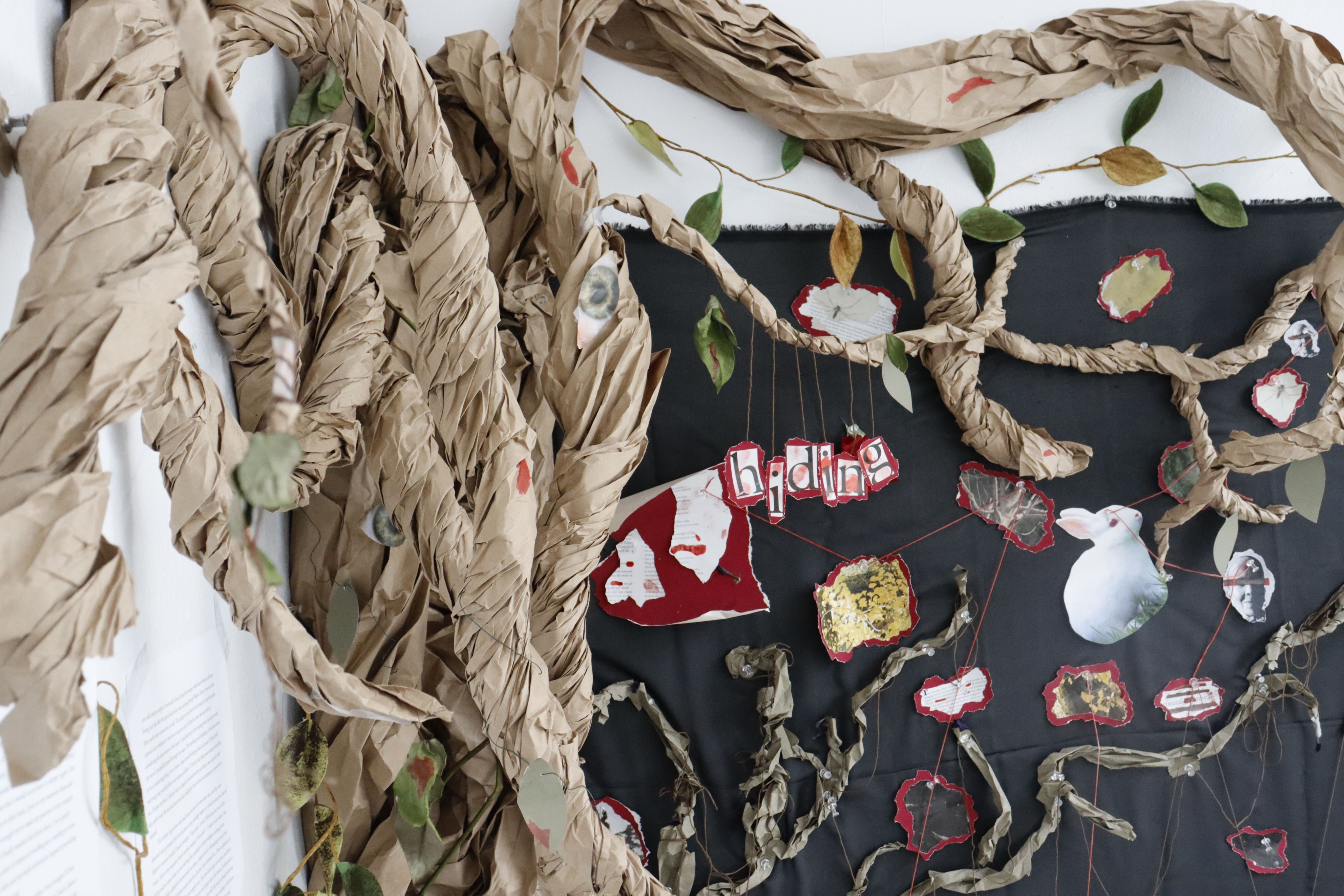
A close-up of a student's installation
A close-up of a student's installation
Much of how Antonini has developed the Writer’s Studio course comes from what she has learned while teaching undergraduate students at the School of the Art Institute of Chicago. Since beginning at the School more than 20 years ago, Antonini has taken note of what drives her students to create their best work. Oftentimes, Antonini finds that students come to her class wanting to jump right into editing their work toward completion too soon. In response, Writer’s Studio stresses the importance of generating ideas, and doing so without restraint. To achieve this, Antonini gives her students ample time to free-write in response to reading excerpts, visual art, and other prompts.
“You've got to give yourself some space to throw down all the possible ideas,” Antonini said. “So one of the first steps is to get students to trust their real, raw ideas by doing that.”
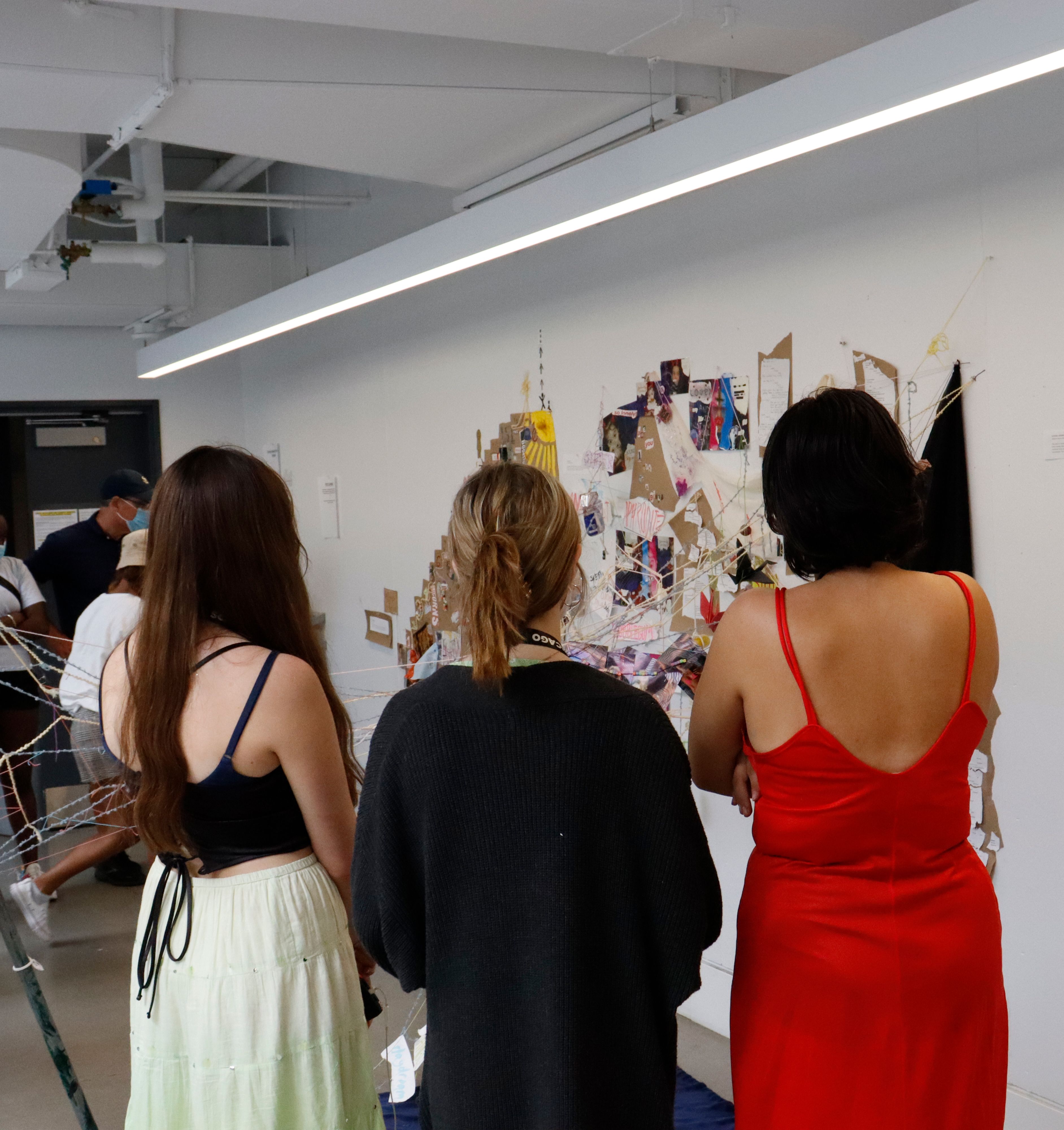
Students inspect work from the class.
Students inspect work from the class.
At the end of the course, students showcase their final works by participating in a literary reading and exhibition attended by their parents. The event always sees the debut of a variety of art forms incorporating students’ writing, from artist books to live performances. By the end of their week-long process of experimentation, revision, and development, Antonini aims to have students walk away with strong pieces of work to add to their portfolios. But on a larger scale, Antonini hopes her students learn to appreciate their unique writer’s voice and to experiment with both playfulness and courage.
“The magic for me comes in watching them open up to the realization that they can do this, that words don't necessarily always have to be limited to what is on the page,” Antonini said. “An early idea, as silly or unfinished as it seems, is valuable, and that the more they write, the more familiar they get with their own writers’ and artists’ voices.” ■
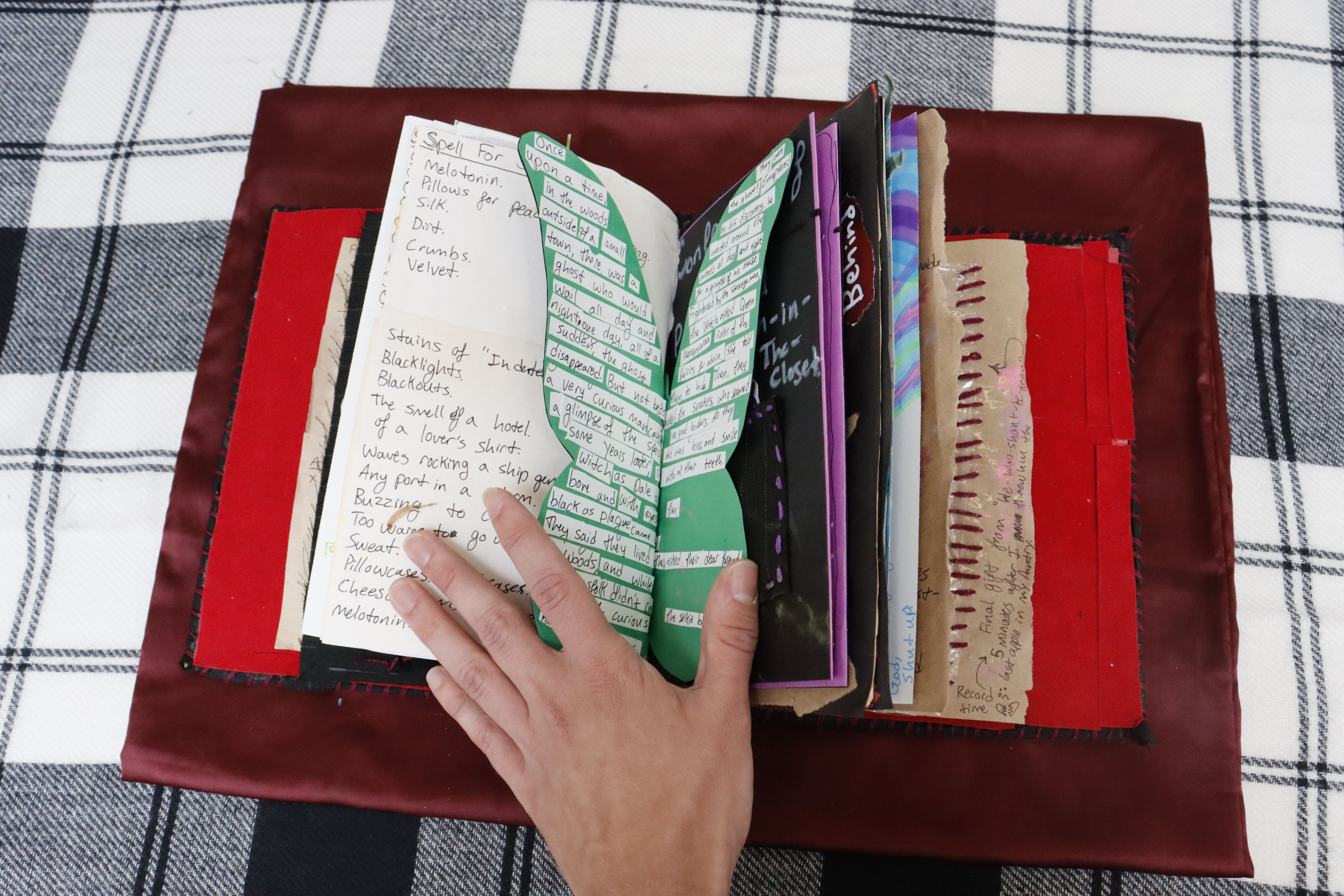
A student's artist book
A student's artist book
